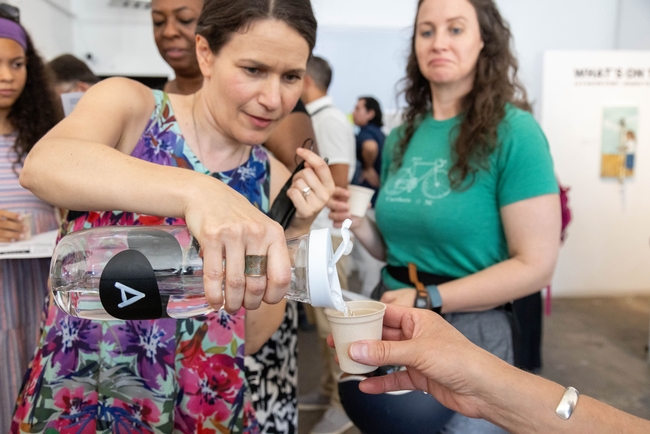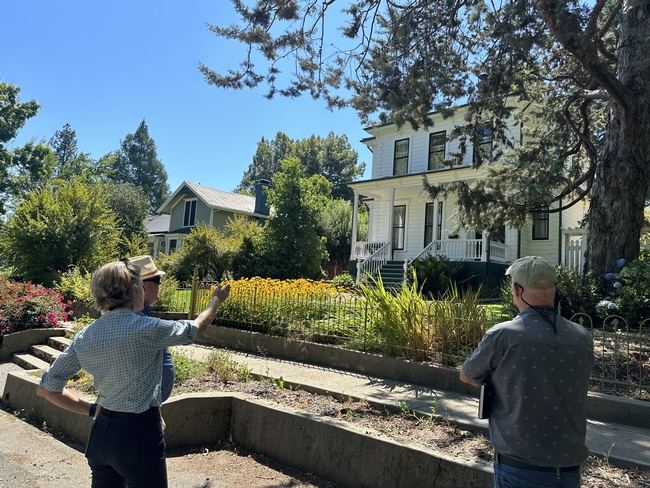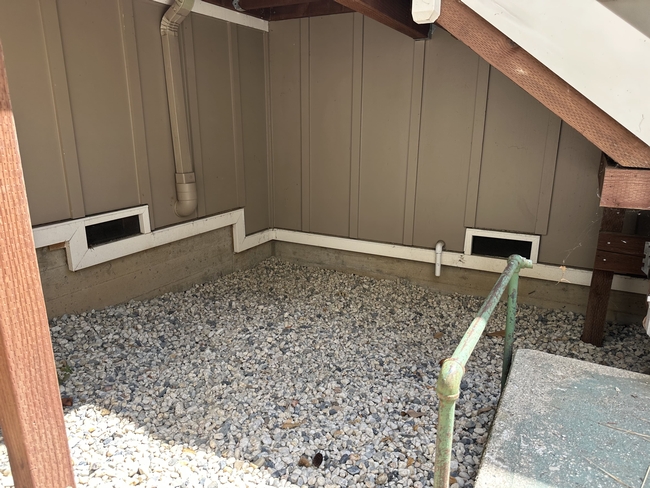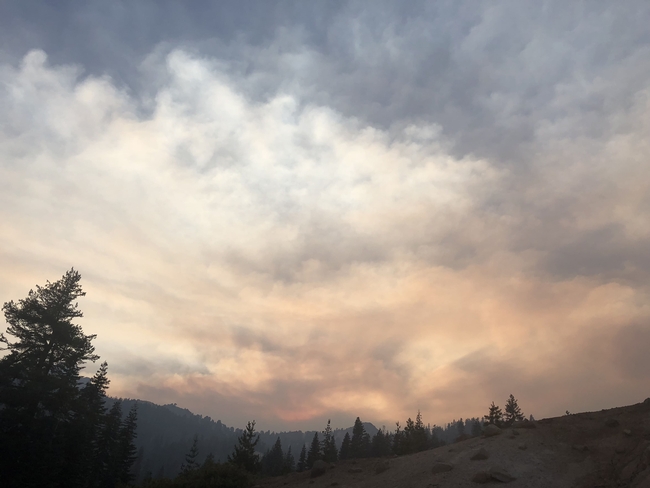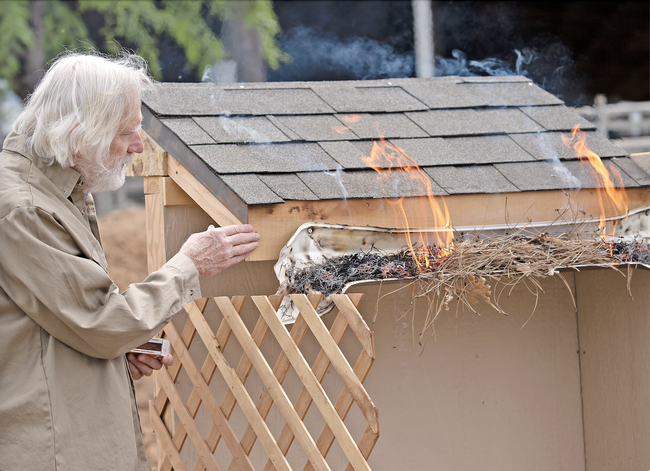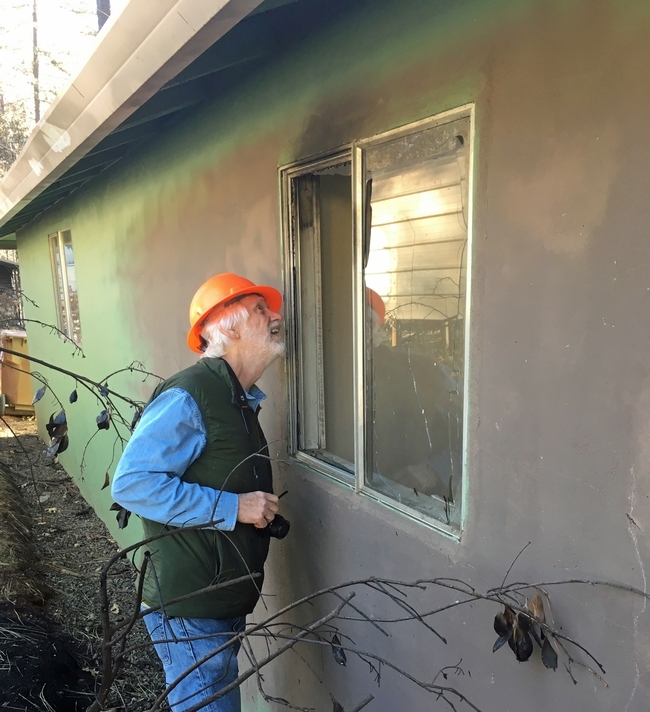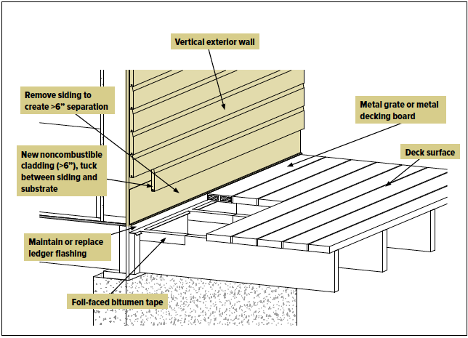Posts Tagged: Health
UC Master Gardeners of Imperial County grow from Mexican, Latino roots
First program of its kind in area establishes free seed library, community garden
One of the many things that make University of California Cooperative Extension in Imperial County unique is its close proximity to the U.S.-Mexico border. Its geographic location, with a border town called “La Frontera” by locals, infuses the UC Master Gardener Program in this area with intercultural knowledge.
In 2022, UCCE launched its first UC Master Gardener Program in the county and has maintained a cohort of 20 participants since then. Kristian Salgado, the program's first coordinator, said the volunteers offer a range of skills to the gardening community.
“The clientele that our volunteers serve tend to be individuals who have gained their gardening knowledge and experience from tending to plants in their homeland of Mexico,” said Salgado. The volunteer UC Master Gardeners of Imperial County reflect the region's predominantly Latino demographic, making it easier for volunteers to connect with their clientele.
“Nopales, chiles, citrus…residents in this region know how to take care of these plants. They've done it all their life. But when you have a program like the UC Master Gardener Program, you can use science to explain why their practices worked all these years,” said Salgado.
According to Salgado, the UC Master Gardener Program can be perceived as too academic for some residents. “It's not a bad thing, but I had to digest the information myself, even the UC Master Gardeners, and figure out how to deliver it in a way that was relevant to everyone,” she added.
As a starting point, Salgado used English and Spanish materials from neighboring counties like “A Garden of Words/Un jardín de palabras”, developed by the UC Master Gardener Program of Los Angeles County.
One method that helped engage volunteers and residents during classes was the use of culturally significant seeds like chiltepin peppers – seeds that Salgado deems a “must-have” if you are a gardener of Mexican heritage.
“When we focused on plant propagation, the volunteers that I worked with agreed that we should propagate plants that our residents were familiar with and use in their everyday cooking,” Salgado explained.
This same approach was employed at the free seed library and demonstration garden – both established and maintained by the UC Master Gardener volunteers at the City of Imperial Public Library. During the warm season you can find Roselle (Hibiscus sabdariffa L.), known to make agua de jamaica, in the seed library – something you won't easily find in grocery stores. In the demonstration garden during the summer, you'll notice a variety of peppers such as chile güero, jalapeño, serrano and habanero.
As the UC Master Gardener coordinator for Imperial County for the last two years, Salgado has focused her leadership on establishing a program that would generate opportunities for UC Master Gardener volunteers to create projects that are reflective of their interests, align with the program's mission and serve all residents in the county. The demonstration garden, which is the first community garden established in the city of Imperial, is an outcome of Salgado's vision.
UC Master Gardener Program reflects, connects community
Eliza Barajas, UC Master Gardener of Imperial County, who works at the library during the week and has witnessed the impact of the garden, said it gives her a sense of pride. “I moved to the [Imperial] Valley a year ago and I was looking for a way to connect with the community. I couldn't have asked for a better program to do that, and I'm so proud to say that I'm a part of the very first cohort in Imperial County,” Barajas shared.
Salgado praised Barajas for her enthusiasm in the program and noted her excellent ability to speak Spanish. “I love the way Eliza flows from English to Spanish. It's effortless! And it comes in handy when we're doing community events and need to cater to our Spanish and English speakers,” said Salgado.
Since the program came to fruition, Salgado has played a pivotal role in the program's progress. Reflecting on why she accepted the role of UC Master Gardener coordinator for Imperial County, Salgado said that the role was a culmination of everything she studied in school and cares deeply about.
While attending California State Polytechnic University, Humboldt, Salgado earned a master's degree in social science focused on the environment and community. She studied the intersections of food insecurity, the agricultural industry and health inequities, and how they specifically impact the Latino community.
Growing up and currently living in Calexico, Salgado questions why her community is food insecure. “Imperial is the ‘salad bowl' of the nation. We export a variety of fresh fruit and veggies all year long. How is it that our community doesn't have enough access to the healthy food it produces?” she asked.
Food security is one concern that Salgado envisions the UC Master Gardener Program addressing through its seed library, community garden and gardening classes.
Following graduate school, Salgado moved back home and joined former classmate and UCCE colleague, Chris Wong, in establishing the first farmer's market in Calexico in 2013. Wong encouraged Salgado to apply her new knowledge and skills at UCCE Imperial County, where she began working as a climate-smart agriculture community education specialist in 2019, supporting growers with grant writing.
“I realized early on that there was a lot of divestment in the community, and I didn't understand why,” she said, adding that she's still working to understand. Salgado's mother-in-law also continuously challenged her to think bigger. “My mom-in-law comes from the Chicano Movement. She's guided me into thinking more critically about the issues we face in our community and as Latinos.”
In September, Salgado began in a new role as the regional operations specialist for the UC Master Gardener Program statewide office, covering the Bay Area to Southern California regions. Salgado hopes to develop useful tools and resources to support coordinators' professional development, while integrating programmatic best practices centered on diversity, equity, inclusion and justice.
“The UC Master Gardeners are full of knowledge, and my education was motivated by identifying how Latinos can get a seat at the table. UC Master Gardeners easily become trusted sources in the community, and for Imperial County, this is how they get a seat at the table,” said Salgado.
Water discussion on Sept. 29 flows from LA art exhibit
Communities in Los Angeles and around California face a variety of water challenges ranging from access to clean, affordable water to water supplies threatened by a changing climate.
The public is invited to a free event featuring a panel discussion of the past, present and future of Los Angeles water. The water discussion will be part of the closing reception for the art exhibit “What's On Tap: LA's Water Story…Source to Spigot” at El Tranquilo Gallery in Los Angeles on Sunday, Sept. 29.
“I hope that people come away understanding that our relationship to and stewardship of water in LA is not only a critical part of our past history, but essential to determining our region's future as well,” said Edith B. de Guzman, UC Cooperative Extension specialist for water equity and adaptation policy with UC Agriculture and Natural Resources and UCLA Luskin Center for Innovation.
The panel will be moderated by UCLA Public Policy Professor Megan Mullin. Panelists will include de Guzman; Amanda Begley, watershed senior program manager for TreePeople; Conner Everts, facilitator for the Environmental Water Caucus, executive director of the Southern California Watershed Alliance, and co-chair of the Desal Response Group; and Mark Gold, director of water scarcity solutions for the Natural Resources Defense Council.
The discussion will be followed by a blind water tasting. Participants will be able to taste how the flavors of three brands of bottled water compare with each other and Los Angeles Department of Water and Power tap water.
“Thus far, many people have chosen LADWP tap as their favorite compared to the bottled brands,” de Guzman said. “So another hope I have is that people will come away with greater appreciation and trust of tap water.”
The art exhibit, curated by Edith and Jolly de Guzman, highlights five distinct water themes that affect Southern California communities – local water, imported water, tap trust, human right to water and affordability.
The Zanja Madre, a Spanish-era aqueduct that moved water from the Los Angeles River to the pueblo of Los Angeles between 1781 and 1904, once ran past the gallery location.
The “What's On Tap: LA's Water Story…Source to Spigot” exhibit will be open from 11 a.m.-3 p.m. Friday through Sunday, Sept. 27-29, with the closing reception 3-6 p.m. on Sunday, at El Tranquilo Gallery, W-19 Olvera Street, Los Angeles 90012. The panel discussion will begin at 4 p.m. The reception will include live music by Shoshana Ben-Horin.
UC seeks toddler volunteers for milk study
Researchers to study whether whole or low-fat milk is best for toddlers
San Francisco Bay Area toddlers who drink cow's milk are being sought to participate in a 12-month study by UC Nutrition Policy Institute, a part of University of California Agriculture and Natural Resources. Milk will be provided for free to participants.
Milk provides children with calcium, protein and vitamin D, which are essential for health and brain development. In the U.S., the American Academy of Pediatrics recommends that children switch from whole milk to low-fat or nonfat milk after age 2 to reduce their intake of saturated fat and calories.
“The purpose of this UC study is to see how the type of milk toddlers drink affects their health, growth and development,” said Kassandra Bacon, NPI project policy analyst.
Researchers with the Nutrition Policy Institute are recruiting children ages 23 to 30 months old. The 625 toddlers will be randomly assigned to drink either whole fat or 1% fat milk starting at age 2. The scientists will assess diet, health and developmental outcomes.
“We will follow each participant for one year, collecting baseline and follow-up data,” said Ryan Williams, a NPI project policy analyst and registered dietitian who is involved in the research.
For 12 months, the scientists will measure each child's height, weight, waist and head circumference. At the beginning and end of the study, parents will be required to take their children to a local lab for a blood draw to assess lipids, cholesterol, insulin resistance and vitamin D status, as well collect a sample of their child's stool so the scientists may analyze the gut microbiome. During a home visit, researchers will also interview parents about their child's development.
Benefits to participants
The assigned milk type will be delivered to participants free of charge via a grocery delivery service. Participating parents will receive advice from a registered dietitian to support healthy milk consumption as part of a balanced diet. The Nutrition Policy Institute also will send the parents monthly newsletters with general health tips. Participants also may earn up to $275 in gift cards by completing the study.
Requirements to participate
Participants for the milk study must meet these requirements:
- Child must be 23 to 30 months old and have public or private medical insurance
- Child's parent/legal guardian must be 18 years or older
- Child must live with the participating parent/legal guardian in the San Francisco Bay Area (Alameda, Contra Costa, Marin, Santa Clara, San Francisco or San Mateo counties)
- Child's parent or guardian must speak English
Children are ineligible for the study if they are:
- a WIC participant
- lactose intolerant
- allergic to milk protein
Lorrene Ritchie, NPI director and registered dietitian, and Anisha Patel, pediatrician at Stanford Medicine Children's Health and professor in the Division of General Pediatrics at Stanford University, are the principal investigators for the study.
For more information about the research and to sign up for the study, visit https://npi.ucanr.edu/milk.
Simple tasks make big difference in preparing for wildfire, smoke
UC ANR Fire Network compiles expert advice on preparedness, evacuation tasks
The explosive growth of the Park Fire in Northern California was fueled by recent, intense heat waves and extremely dry vegetation – conditions seen at many locations across the state.
Given the potential for wildfire and smoke impacts during what is expected to be a protracted “fire season,” California residents should think ahead and complete emergency preparations: https://ucanr.edu/sites/fire/Preparedness/.
“If you are concerned that you or someone you know could be affected by fire or smoke, now is the time to take simple steps to prepare,” said Yana Valachovic, University of California Cooperative Extension forest advisor for Humboldt and Del Norte counties.
Valachovic and other members of the UC Agriculture and Natural Resources Fire Network are urging community members to tackle small but significant tasks to minimize potential fire damage. Many of these tasks can be finished in a weekend, such as:
- Clean debris from your roof and gutters.
- Inspect the area around your home and nearby structures and remove all combustibles (dead grass, plants, woody mulch, stored wood, etc.) in the first 5 feet, including under decks and stairs.
- Inspect the foundation, under-eave, and gable-end vents for holes and damage; add a layer of finer metal-mesh screens (1/8” mesh) to the vents to prevent ember penetration.
- Inspect the garage door bottom seal to make sure embers can't blow under the door.
- Replace the first 5 feet of wooden fences that attach to buildings with a noncombustible panel or gate.
A recently published report, “Retrofitting a Home for Wildfire Resistance,” also can help residents prioritize the measures that are most cost-effective and fit their budget.
Six things to do, six hours before evacuation
As evacuation warnings are issued for local communities, there are six important things to do in advance of an actual evacuation order, according to Valachovic:
- Close windows, pet doors and skylights.
- Move inside patio cushions, brooms and door mats; tie open wooden gates that attach to the house or deck to prevent a fire from traveling from the fence to the house.
- Relocate the barbecue propane tank away from home.
- Stage buckets of water and garden hoses in visible locations.
- Dress for evacuation: cotton clothes, sturdy shoes, hat and face protection and leather gloves.
- Put your “go bag” in your vehicle.
The UC ANR Fire Network website also includes downloadable checklists – in English and Spanish – for your go bag (https://ucanr.edu/sites/fire/Safety/Evacuation/Preparing_a_Go-Bag/) and for a host of important pre-evacuation tasks for your household, property, pets and livestock (https://ucanr.edu/sites/fire/Safety/Evacuation/).
“We want communities to be wildfire-prepared – not scared,” Valachovic emphasized.
Smoke exposure a significant public health concern
Hazardous smoke can blanket wide swaths of California – and much of the Western U.S. – during ongoing wildfire events. A primer on harmful health effects, a list of tips for reducing smoke exposure, and other resources and links can be found on the UC ANR Fire Network site: https://ucanr.edu/sites/fire/Safety/Air_Quality_and_Smoke/.
“If there's smoke in the forecast for the next few days, I would keep an eye on my local air quality at fire.airnow.gov,” said Katie Low, statewide coordinator for UC ANR's Fire Network. “And if the AQI – Air Quality Index – is high, I would limit my outdoor activity, wear an N95 mask if I do go outside, and run my air purifier.”
For instructions on making a DIY air cleaner, creating a “clean air space” in your home and fitting an N95 mask properly, visit the California Air Resources Board's “Smoke Ready California” page: https://ww2.arb.ca.gov/smokereadyca.
Another useful tool is the crowd-sourced #FireMappers fire activity map – powered by the National Alliance for Public Safety GIS Foundation, GISCorps, and CEDR Digital Corps – accessible through the UC ANR Fire Network site: https://ucanr.edu/sites/fire/Safety/Current/.
Report: Making homes more resistant to wildfire can be affordable
Priorities include removing objects within five feet of a house, upgrading vents
Wildfire losses cost taxpayers and communities hundreds of billions of dollars each year, and preparing communities before a disaster occurs is the best way to avoid damage to homes and neighborhoods. Retrofitting existing homes can make communities safer while avoiding billions in disaster costs.
As Californians learn to live with wildfire, scientists encourage improving the structure and design of houses and other buildings to help them survive wildfire. A new report shows that even inexpensive changes can increase wildfire resistance.
“Retrofitting a Home for Wildfire Resistance” suggests that some of the most effective strategies to reduce the vulnerability of homes and neighborhoods to wildfire can be done affordably.
“This report is a practical tool that helps evaluate the relative costs and benefits of fire-hardening retrofits,” said Yana Valachovic, a University of California Cooperative Extension forest advisor, who reviewed the study. “These retrofits can substantially improve the odds that a home or building will withstand wildfire exposures to embers, radiant heat or flame contact.”
The report is co-authored by Kimiko Barrett, wildfire research and policy analyst for Headwaters Economics, a non-partisan research organization based in Bozeman, Montana, and Stephen L. Quarles, UC Cooperative Extension advisor emeritus, who has studied the vulnerability of the built environment to wildfire exposures and potential mitigation strategies.
In partnership with California's Department of Forestry and Fire Protection, or CAL FIRE, Barrett and Quarles examined the costs for improving the structure and design of existing homes to increase their wildfire resistance.
“This tool can also help homeowners build a budget and prioritize tasks that often feel overwhelming,” Valachovic said. “Everyone should prioritize removing combustible vegetation, mulch, and stored materials within the first five feet of a structure and upgrading vents to resist embers.”
Simple actions can reduce a home's vulnerability to wildfire
The report's conclusions are derived from a detailed examination of the latest available science on mitigation strategies and construction costs. The authors identified costs for retrofitting structures to meet and exceed California's building code (Chapter 7A) for wildfire resistance, but the general principles and conclusions can be applied in other states, adjusting for local economic and supply conditions.
For a typical 2,000-square-foot home in California, retrofitting costs can range from $2,000 to upwards of $100,000 for the highest level of protection.
“When we looked at the latest building techniques and cost data, we found some effective retrofitting strategies can be done for between $2,000 to $10,000,” said Barrett. “While the highest level of protection can cost more, it is often not necessary. Simple actions such as removing flammable materials from near the home and removing debris from the roof can be done at little to no cost.”
The authors also incorporated effective mitigation strategies that could reduce risk without requiring costly upgrades over the entire home, such as replacing siding only on the side of a home that is close to another building, such as neighbor's home or a detached garage, or replacing combustible deck boards next to the home with a noncombustible deck board or metal grate.
They also incorporated a systems approach, where the vulnerability of adjacent components are considered, and recommend steps such as placing noncombustible surfaces at the intersection between two components.
For example, Quarles said: “Adding a gutter cover and ensuring the adjacent edge of roof is not vulnerable by incorporating a metal drip edge and, if necessary, a noncombustible bird stop at the edge of the roof. Or, replacing a combustible deck board next to the house and, if necessary, adding metal flashing at the base of the exterior wall.”
Cost estimates in the report include those for upgrading a home's exterior walls, roof, deck, windows, doors, eaves, gutters and near-home landscaping – all areas likely to be exposed to embers, direct flames and radiant heat.
“The graphics detailing specific elements of the retrofitting process are very useful,” Valachovic said.
Charts, architectural renderings and a detailed appendix of cost estimates provide a basis for a general understanding of the methods and budgets that homeowners might consider when retrofitting their home for wildfire resistance.
Retrofitting for wildfire can make communities safer
Contractors and others seeking information about building wildfire-resistant homes can gain valuable insights from this analysis, along with retrofit costs generated by the California Wildfire Mitigation Program.
“This analysis demonstrates that investing in wildfire-resistant retrofitting for homes is a cost-effective strategy to protect communities that could save billions in disaster costs,” said Barrett. “As more people live in fire-prone areas, we must also take a closer look at retrofitting homes to be stronger and more durable.”
While the authors hope Californians use the information to protect their homes, people who work in construction, development, design and policy also can use the information to show that retrofitting homes for wildfire resistance is an effective way to protect communities.
This 58-page report received funding from CAL FIRE and the U.S. Forest Service and can be downloaded for free at https://headwaterseconomics.org/wp-content/uploads/2024/06/Wildfire_Retrofit_Report_20240624.pdf.






